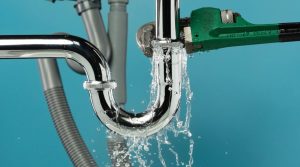Table of Contents
ToggleWater is an essential resource for every business, but many companies are unknowingly overpaying for it. If you suspect you may be overpaying or overusing water, it may be a good time to take a closer look.
We’ll explore key signs that your business might be overpaying for water by assessing unusual usage patterns and proactive steps you can take today to start saving money.
What to Do About Your Water Bills?

Your business water bills are made up of two main components: the cost of the water you use and the charges for the drainage of wastewater or effluent from your premises.
How you’re charged depends on your water supplier and whether your business is metered or charged based on the value of your property.
Depending on the industry, your business may use a significant amount of water, which may then mean you could qualify for a large user tariff, which could result in lower rates, as it generally costs less to supply water to larger businesses.
The majority of your water and wastewater bill consists of wholesale charges, which are set by your local wholesaler and regulated by Ofwat (in England and Wales) or the respective regulators in Scotland and Northern Ireland.
These charges make up around 90% of your total bill, and it’s important to note that wholesale rates remain the same regardless of which water retailer you choose.
Your supplier should be transparent and clear about these charges, helping you better understand what you’re paying for and why. With that being said, let’s explore typical unusual water usage patterns.
Unusual Water Usage Patterns
Uncommon water usage patterns can be a clear indicator that your business may be overpaying for water. These patterns could include sudden spikes in water consumption, consistently high usage during off-hours, or a noticeable increase compared to similar periods in previous months.
As a business owner, you need to regularly monitor your water usage to identify any anomalies. Many water meters now come with Automatic Meter Reading (AMR) technology, which provides detailed data on your consumption, making it easier to pinpoint peak times or excessive water use.
If you notice unexplained increases, check for common issues like leaks or inefficient water systems. Which we will go into more detail on shortly.
Keeping an eye on your water meter readings, submitting them regularly, and reviewing the data can help you spot problems quickly.
How Inefficient Water Management Systems Contribute to Extra Costs?
Poor water management systems can increase business costs without you even realising it. Water waste, whether due to leaks, outdated equipment, or poor system design, adds unnecessary expenses.
Solutions such as predictive analytics and real-time data tracking, allow you to identify inefficiencies and reduce water consumption. This leads to lower sourcing, storage, and disposal costs, and helps extend the lifespan of your equipment.
Leaks, Maintenance & Regular Audits

Routine inspections, also known as water audits, allow professionals to spot small leaks, damaged pipes, or potential issues that could lead to costly water damage if left unchecked.
With the help of modern technology, such as water leak detection sensors and smart meters, it isn’t difficult for businesses to track their water usage in real-time and detect irregularities that may indicate a leak.
Preventative measures, such as maintaining consistent water pressure or installing pressure-reducing valves, are all small yet highly impactful solutions to drive down costs.
Take Proactive Steps To Business Water Today
The first step in stopping overpayment for business water is to schedule a full water audit. This will help you assess your current consumption, identify leaks, and focus on areas where waste can be reduced.
Then, consider switching to a more cost-effective business water supplier or renegotiating your current contract, especially if your business qualifies for a large user tariff.
Gradually introduce water-saving devices and always check with your supplier for any recommendations or discounts that can help reduce unnecessary usage.
Lastly and most importantly, regularly monitor your water meter and set up alerts for unusual consumption, so you’re always in control and can quickly address any issues that arise.




